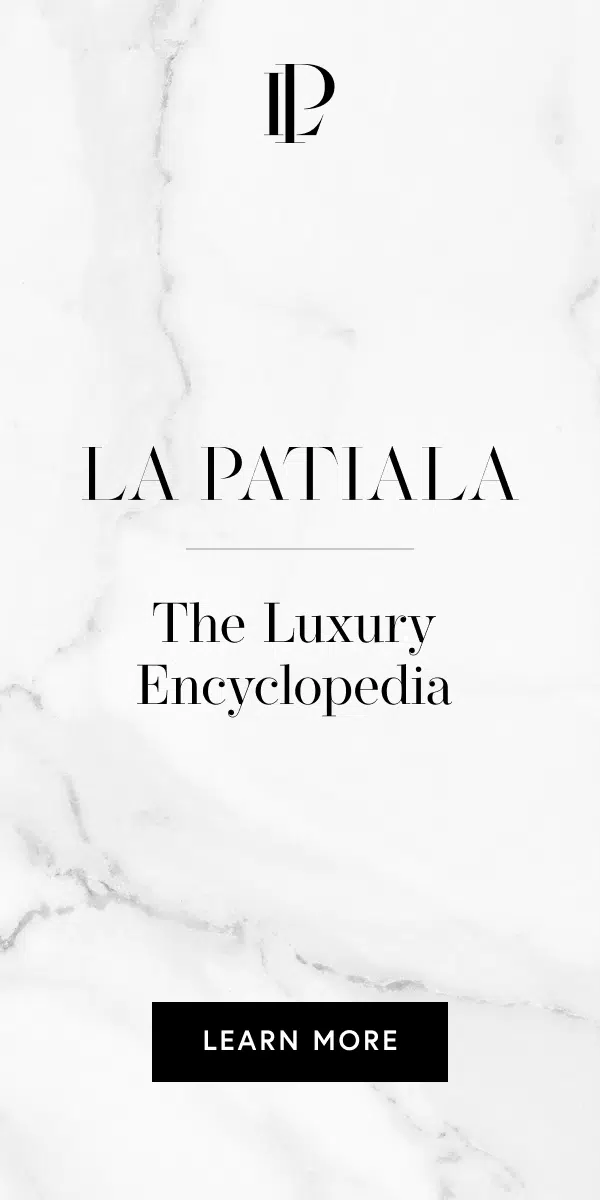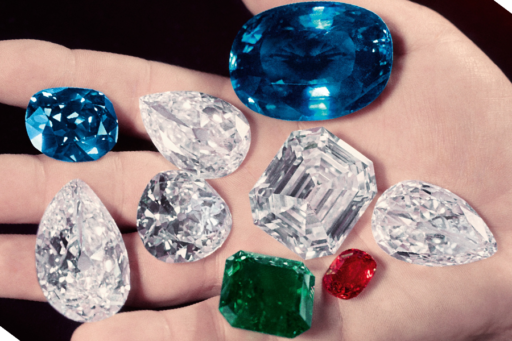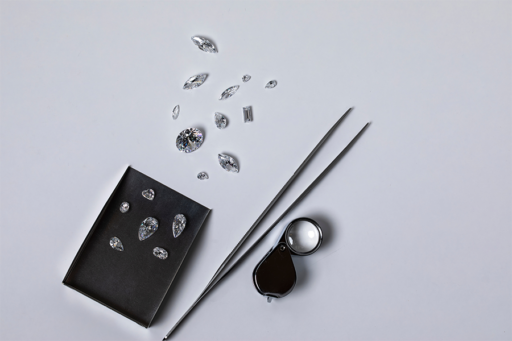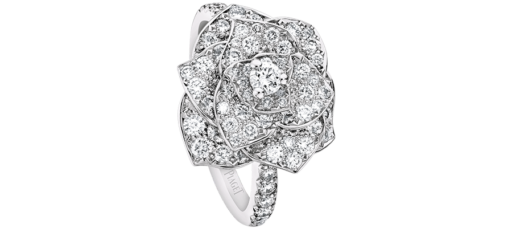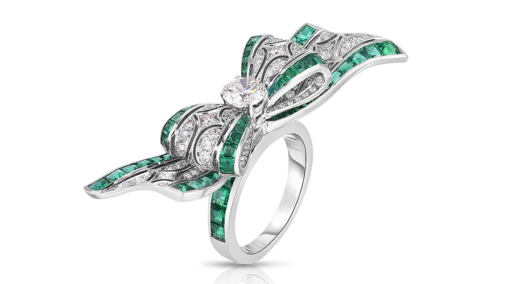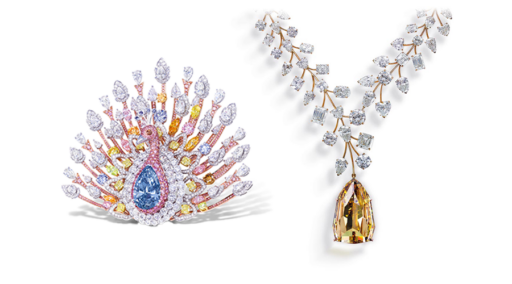The 15 Biggest Diamonds in the World
Ever wonder where diamonds come from? Our list of the world’s biggest diamonds will both enlighten and dazzle you.
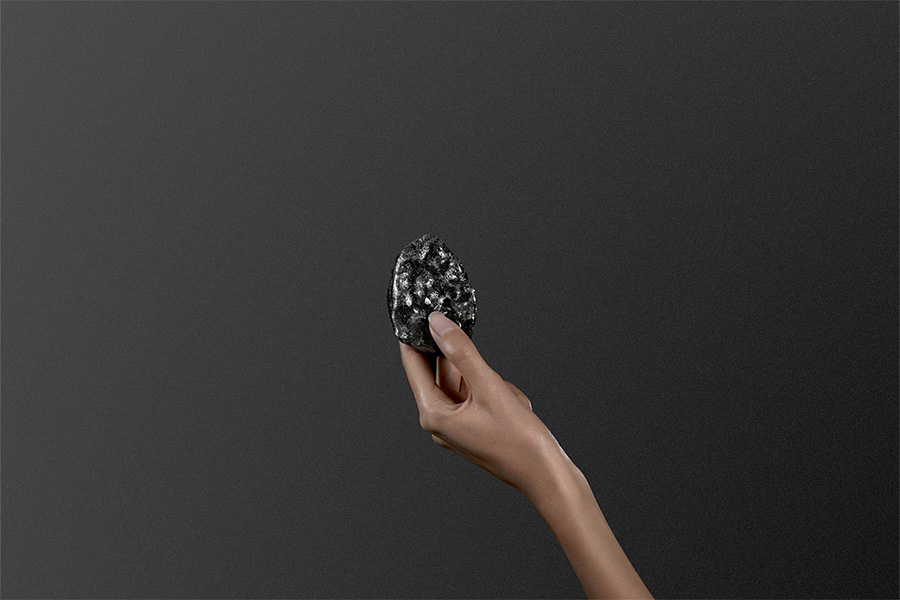
Diamonds have entranced humanity since their discovery in India millions of years ago. While even the smallest diamonds are beautiful, large diamonds are hypnotic. Big diamonds are also extremely rare for several reasons.
First, diamonds formed billions of years ago deep beneath the earth’s crust — approximately 100 miles below the surface. Underground volcanic eruptions 20-30 million years ago carried them to the surface, where they are mined today. Second, the mining process can break large diamonds during extraction. For centuries, miners didn’t know what was hiding within the rocks they mined, and many big diamonds might have been broken before they were unearthed. Finally, planning how to cut and polish a rough diamond is a process that can take years and requires specialized expertise. Until the computer era, diamantaires didn’t have the tools to peer inside a diamond to see the quality, color, and inclusions. If this technology existed, we might have more cut and polished diamonds over 100 carats.
These difficult circumstances of both creation and extraction explain why big diamonds are so uncommon and covetable. However, new technologies allow mining companies to find and unearth large diamonds while keeping them intact. This led to a dramatic increase in the discovery of large diamonds in the past decade, most notably at the Karowe mine in Botswana, which has produced 328 diamonds over 100 carats since 2012.
Our list of the world’s biggest diamonds will give you insight into these complex, rare gems and, hopefully, a new appreciation for how truly special they are.
The 15 Biggest Diamonds in the World
Cullinan Diamond: 3,106.75 carats
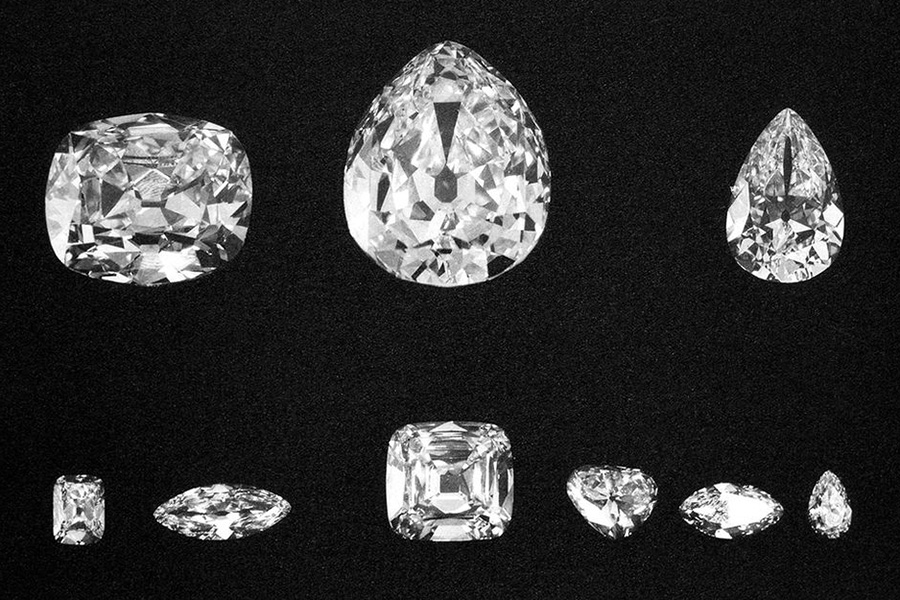
The Cullinan is the largest diamond in the world — and one of the most famous. Officials discovered it in 1905 during a routine inspection of the Premier mine in South Africa. They named the 3,106.75-carat rock after the mine’s owner, Sir Thomas Cullinan. He sent the diamond to King Edward VII because the mine was in a British colony. Two years later, the colony’s government voted to gift the diamond to the king. The monarch was hesitant to undertake the responsibility, but he ultimately accepted it. He entrusted the cutting process, which took eight months, to Dutch jewelers Joseph and Abraham Asscher.
The rough diamond yielded two large gems: a 530.2-carat pear-shaped diamond, Cullinan I, and a 317.4-carat cushion-cut diamond, Cullinan II. It also yielded many smaller stones, some retaining the Cullinan moniker. King Edward VII incorporated Cullinan I into the Sovereign’s Sceptre and Cullinan II into the Imperial State Crown, famously worn by new monarchs at their coronation. He gifted an 11.5-carat marquise-cut diamond, Cullinan VI, to his wife, Queen Alexandra, and paid the Asscher brothers for their services with the remaining diamonds. Queen Mary inherited the Cullinan VI when she married King George V in 1893 and purchased the 18.8-carat heart-shaped diamond, Cullinan V, back from the Asschers in 1911. Her Majesty set the Cullinan V into a custom brooch, which later became one of Queen Elizabeth II’s favorites.
Sewelô Diamond: 1,758 carats
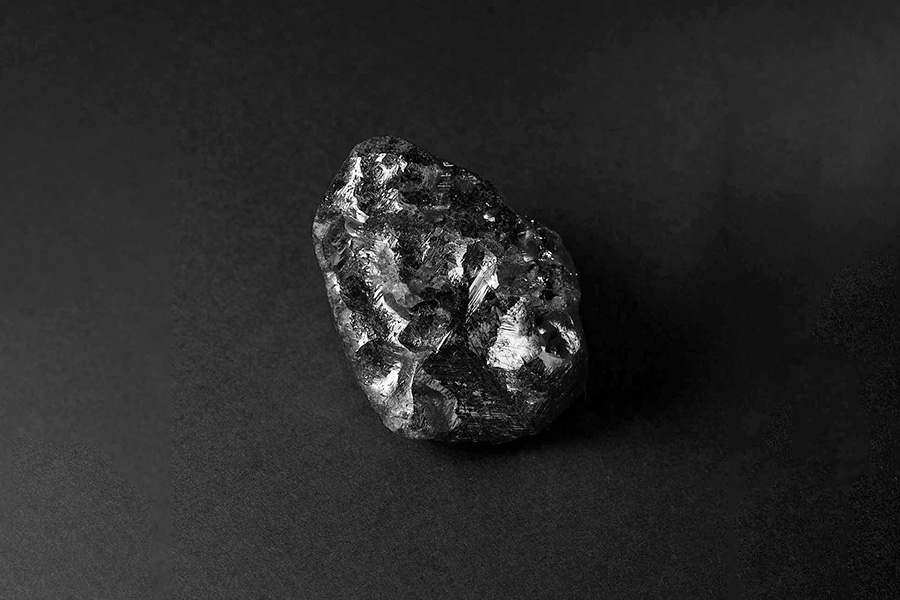
The Sewelô, meaning “rare find” in the Setswana language, is the world’s second-largest diamond. Lucara Diamond Corp, a Canadian diamond mining company, discovered the rough diamond in 2019 at its Karowe mine. The 1,758-carat rough diamond was approximately the size of a tennis ball. Initially, it appeared to be black because it was covered by a thin layer of black carbon. This meant that experts could determine the quality of the diamond only by cutting it. French luxury house Louis Vuitton purchased the Sewelô in 2020 for an undisclosed amount. Experts estimate it could be worth between $6.5 million and $19.5 million. Louis Vuitton first displayed the diamond at its Place Vendôme store in Paris. It later partnered with the Belgium-based diamond-cutting company HB Antwerp to realize the diamond’s potential using nanotechnologies in lieu of standard equipment. Since acquiring the stone in 2020, Louis Vuitton has not divulged the details of how it used the diamond, but it planned to offer top clients the opportunity to commission bespoke diamonds from the Sewelô in its proprietary LV Monogram Star cut.
Lesedi La Rona Diamond: 1,109 carats
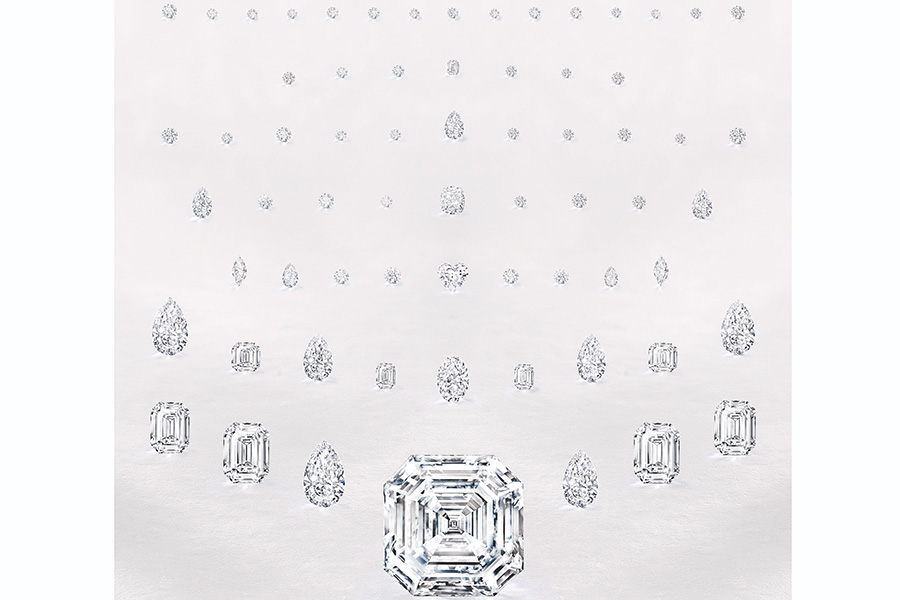
Lucara workers found this 1,109-carat, colorless diamond in 2015 at the Karowe mine. At the time, it was the largest diamond discovered in more than 100 years and the second-largest diamond ever found. Laurence Graff purchased it in 2017 for $53 million on behalf of his jewelry brand, Graff, and its gemologists analyzed the diamond for months before cutting it. Graff’s technicians needed to develop new scanning technology and software because the diamond was too large for its existing equipment. The result was a 302.37-carat square emerald-cut diamond and 66 smaller diamonds weighing between less than a carat and 26 carats. Graff named the largest diamond Lesedi La Rona, meaning “our light” in the Setswana language. The Gemological Institute of America (GIA) graded it D color, the best possible color for a diamond, and certified it as the world’s largest diamond of the highest color and clarity. It is also the world’s largest square emerald-cut diamond. Graff donated the remaining fragments of the gemstone to the Smithsonian Institute for research.
Lucara Diamond: 1,175 carats
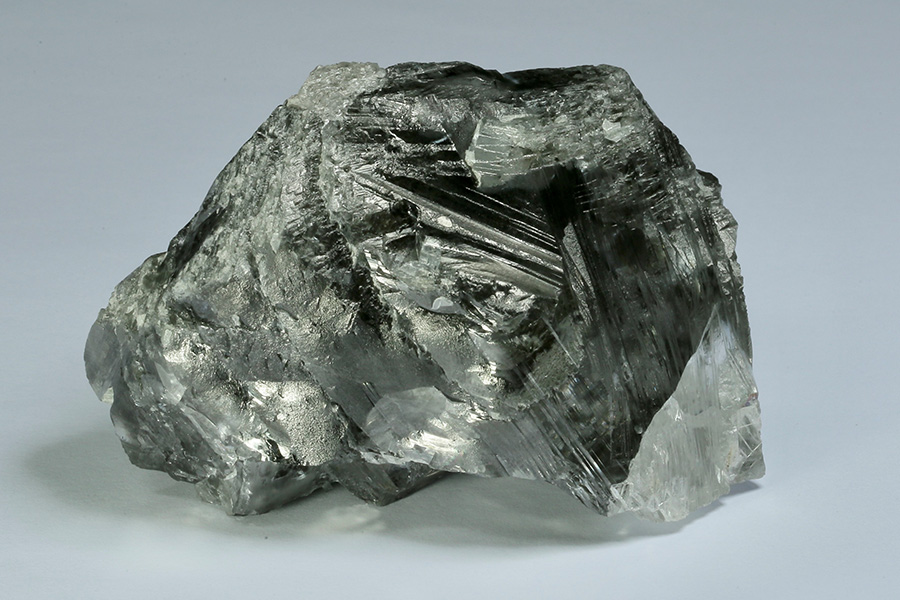
Lucara discovered its namesake diamond in 2021 at the Karowe mine. The diamond measures 77mm by 55mm by 33mm, but it is not a 100% gem-quality diamond. Instead, the company calls it a “clivage gem of variable quality with significant domains of high-quality white gem material.” A clivage gem must be broken down before it can yield polished stones. In recent years, Lucara and HB Antwerp have held viewings of the diamond in New York. It is unclear whether it was ever sold or what size and quality of cut and polished diamonds Lucara could craft from the rough.
Jwaneng Diamond: 1,098 carats
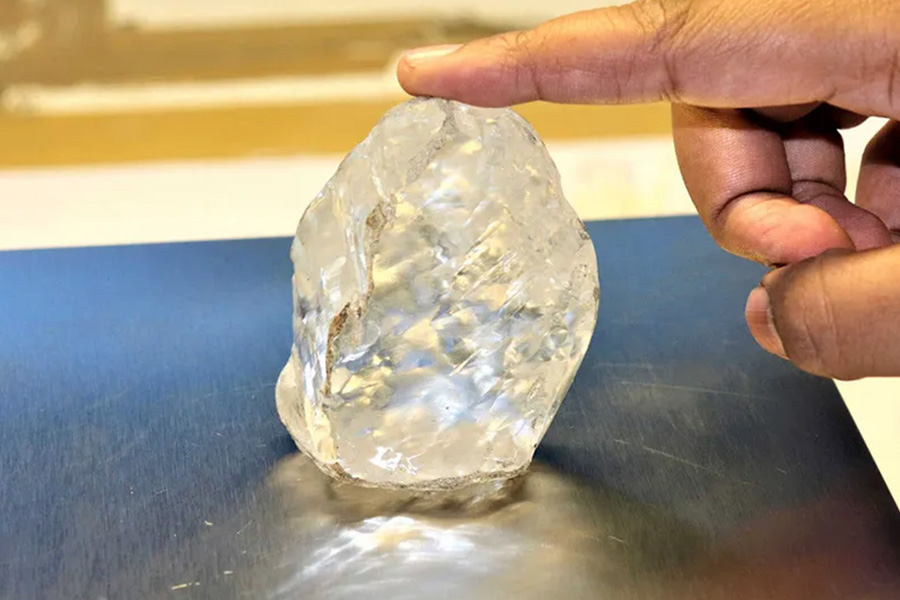
Workers found this 1,098-carat diamond in 2021 at the Jwaneng mine in Botswana. Debswana Diamond Company, a partnership between De Beers and Botswana’s government, owns and operates the mine. The Jwaneng is the company’s largest gem-quality diamond ever discovered. After its discovery, Debswana presented it to the president of Botswana, Mokgweetsi Eric Masisi. Together, they decided to sell the Jwaneng diamond and use the proceeds for national development. Experts say the diamond is worth around $55 million.
Karowe Diamond: 1,080 carats
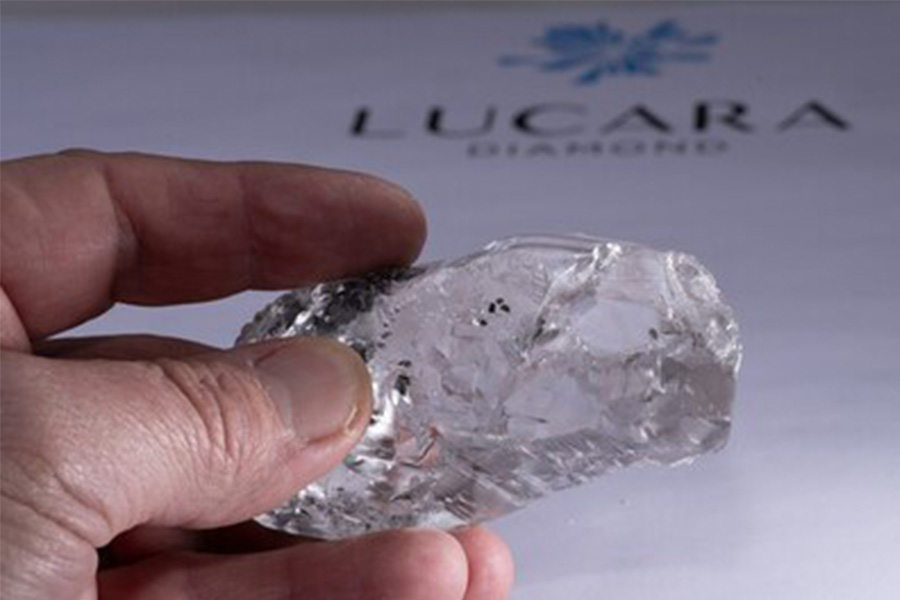
Lucara recovered this 1,080-carat rough diamond in 2023 at the Karowe mine. At the time of publishing, the company hadn’t yet named the diamond. The precious gemstone is one of the world’s largest colorless diamonds. It is similar in size and color to the Lesedi La Rona, also hailing from the Karowe mine, making it worth around $50 million. Depending on the planning and cutting process, this diamond can potentially yield a similar number of smaller diamonds as the Lesedi La Rona.
Karowe Diamond: 998 carats
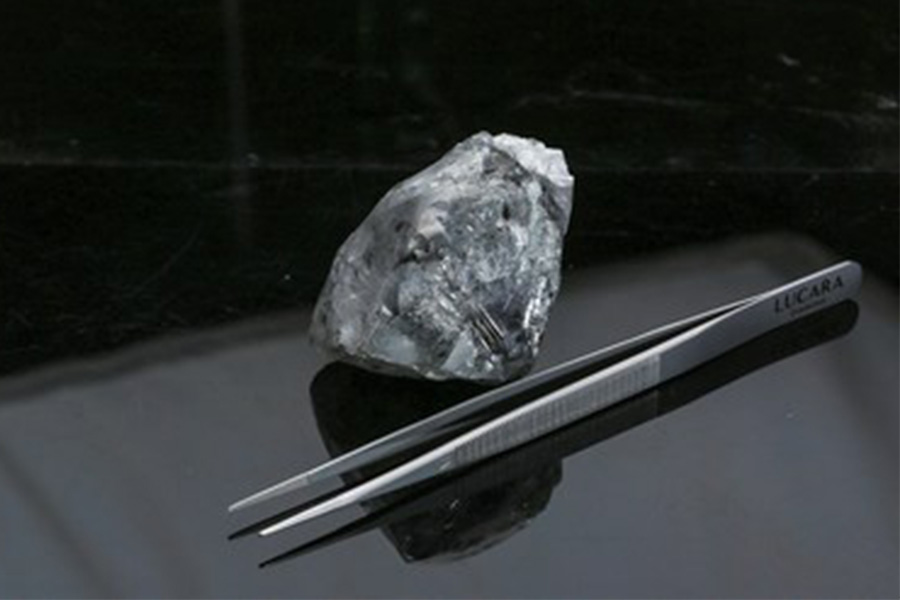
Lucara discovered this 998-carat diamond in 2020 at the Karowe mine. It recovered the diamond using Lucara’s Mega Diamond Recovery (MDR) XRT circuit, a new technology that identifies diamonds larger than 100 carats. That way, miners don’t accidentally crush huge diamonds in the mining process. It was only the second diamond of more than 500 carats that Lucara had successfully recovered using MDR. Whether Lucara sold or cut and polished this diamond is unclear.
Excelsior Diamond: 995 carats
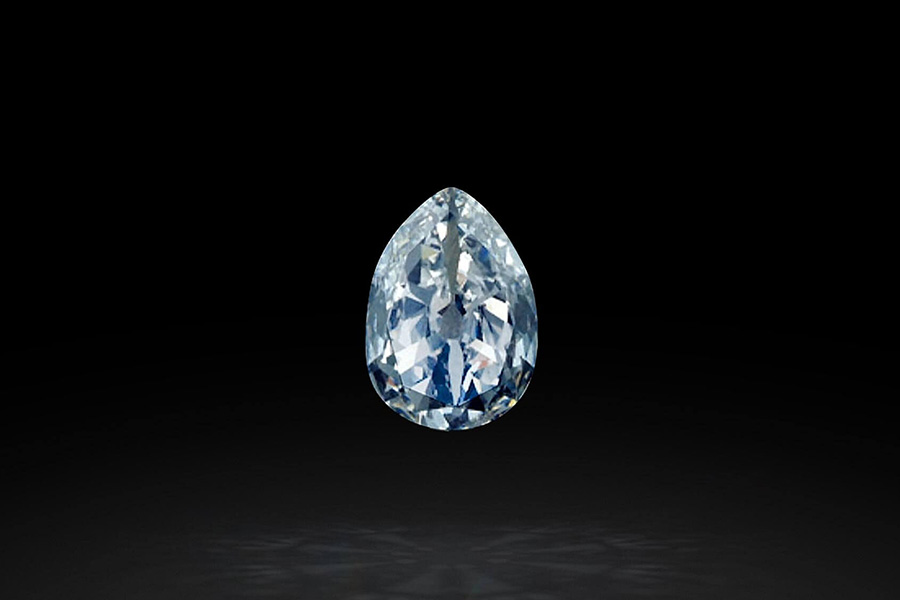
Before the Cullinan, the world’s largest diamond was the Excelsior. A worker found the blue-white 995-carat rough diamond in 1893 while shoveling gravel onto a loading truck at the Jagersfontein mine in South Africa. Originally, the diamond had an unusual shape: It was flat on one end and rose into a peak on the other. After years of struggling to secure a buyer, the mine’s owners tapped master cutter Joseph Asscher in 1904 to execute the cutting process. Asscher cut it into 21 diamonds, the largest of which is a pear-shaped diamond that weighs 69.69 carats and retained the name Excelsior. While a diamond of this shape and size is significant, it is a shame that the largest diamond that the nearly 1,000-carat rough produced is barely 70 carats. Moreover, the cut and polished diamonds weigh 373.75 carats in total, marking a loss of almost 63% of the rough diamond. With today’s technology, cutters could have likely yielded much larger diamonds that would hold a more noteworthy place in history. Nevertheless, Tiffany & Co. purchased three of the Excelsior diamonds in 1993 for an undisclosed amount. Robert Mouawad bought the G-color 70-carat Excelsior I for $2,642,000 in 1996 and set it into a stunning bracelet.
Star of Sierra Leone Diamond: 969 carats
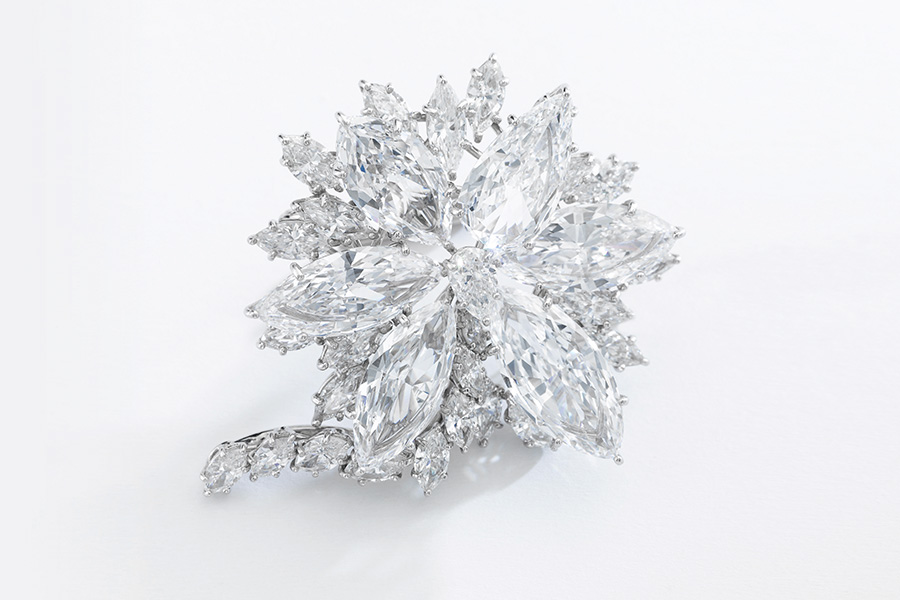
The Star of Sierra Leone is the world’s largest alluvial diamond. Alluvial diamonds are diamonds that move from their primary source to a body of water due to natural erosion, such as wind, rain, and water currents, over an extended period. Workers discovered it on Valentine’s Day in 1972 at the Diminico alluvial mine in the Koidu area of Sierra Leone. That same year, Harry Winston purchased the rare Type IIA diamond for nearly $2.5 million. Winston entrusted master cutter Lazare Kaplan with the cutting process, yielding 17 diamonds — 13 of which are flawless. The largest diamond originally weighed 143.2 carats, but Kaplan recut it into seven gems due to an internal flaw. Of those diamonds, Winston recut a 22.27-carat pear-shaped diamond into a flawless 21.69-carat diamond before setting it into the Star of Sierra Leone VI ring. He also set six of the recut diamonds into the famous Star of Sierra Leone brooch.
Lesotho Legend Diamond: 910 carats
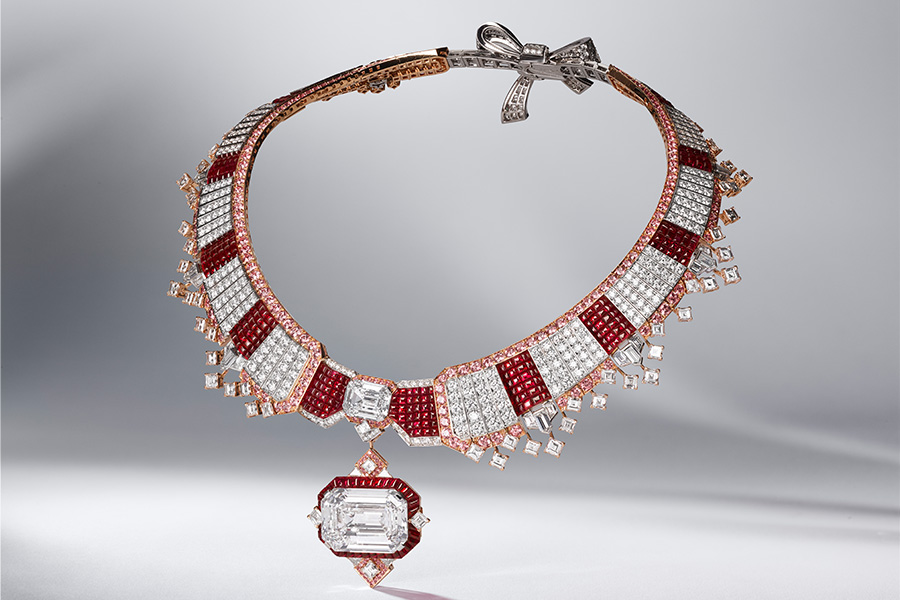
Stunning diamonds and colored gemstones are at the heart of every high-jewelry collection. This is certainly the case for Van Cleef & Arpels’ Mystery Set Jewels, a collection cut entirely from the Lesotho Legend, a 910-carat rough diamond. Workers discovered the Lesotho Legend in 2018 at the Letseng mine in South Africa. That same year, the French high-jewelry house purchased the enormous 910-carat diamond for $40 million. After a year of planning, diamond cutters produced 67 flawless diamonds that Van Cleef & Arpels set into the collection. The maison’s designers used its signature Mystery Setting technique, creating the illusion of floating jewels. The collection marries Lesotho Legend diamonds with beautiful rubies, sapphires, and emeralds and uses lines and curves to offer a playful, chic energy. One of our favorite pieces from the collection is the Collerette Mystérieux necklace, which features a 51.18-carat emerald-cut diamond surrounded by glistening rubies and pink sapphires.
Incomparable Diamond: 890 carats
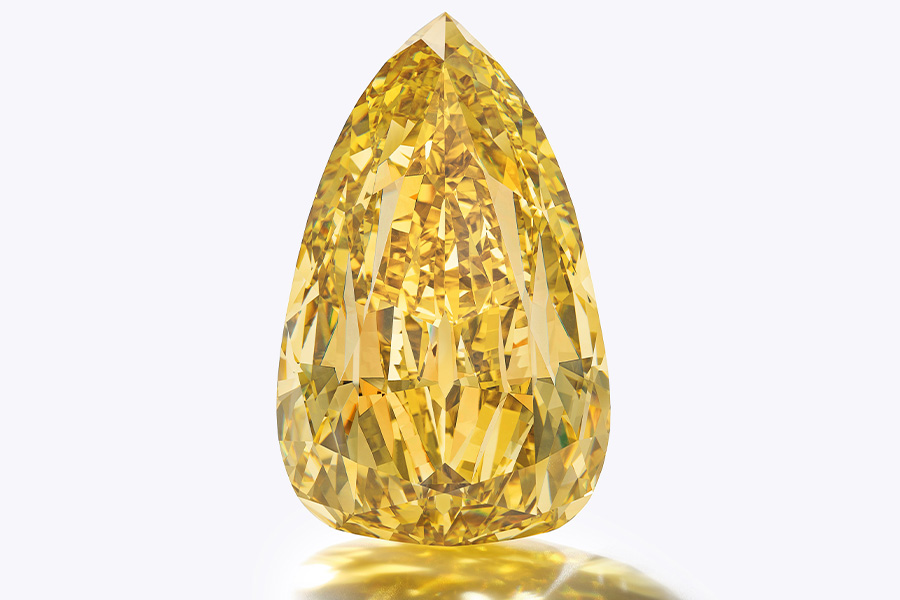
In the early 1980s, a young girl found this 890-carat diamond in the Democratic Republic of Congo. She showed it to her uncle, who sold it to local diamond dealers. A group of Lebanese buyers were the first to purchase it. Then, De Beers bought it and later sold it to the Zale Corporation. Zale facilitated the cutting process, which lasted four years under the supervision of master cutter Marvin Samuels. It yielded 15 stones; the largest diamond, the Incomparable Diamond, weighed 407.48 carats. The GIA graded it as internally flawless and a Fancy Deep Brownish-Yellow color. In 2013, Mouawad Jewelers incorporated the diamond into the world’s most valuable necklace — featuring stunning rose gold branches — and sold it for $55 million. Later, experts recut the Incomparable Diamond to produce a 303-carat pear-shaped diamond renamed the Golden Canary. Despite it being over 100 carats less in weight, the Golden Canary is brighter in hue and more brilliant due to the new cut. Sotheby’s sold the Golden Canary for $12.4 million at auction in December 2022 (below the estimate, but still a significant price).
Constellation Diamond: 812 carats
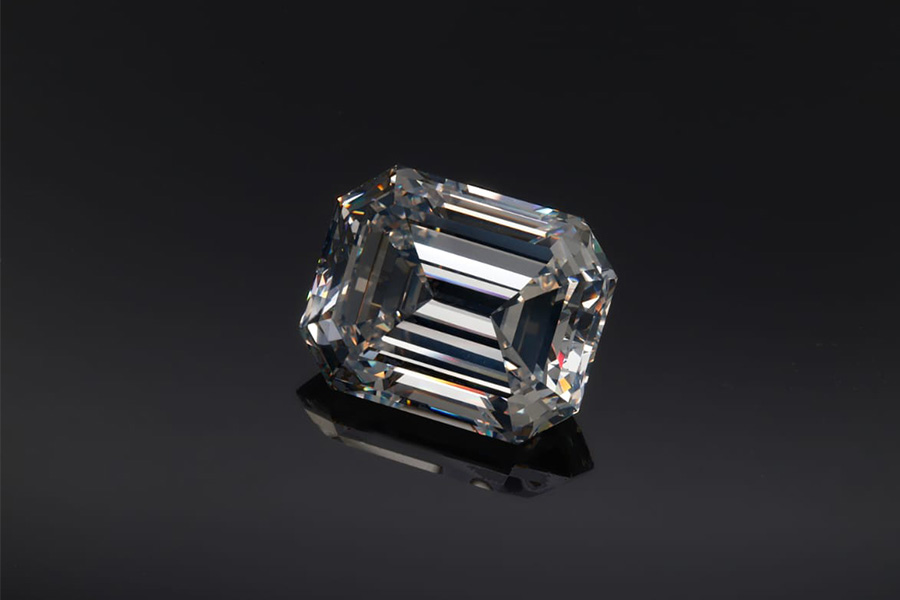
Lucara uncovered the 812-carat Constellation in 2015 at the Karowe mine. Nemesis International, a Dubai-based diamond trading company, partnered with Swiss jeweler de Grisogno and purchased it in 2016 for $63.1 million. This deal set a world record for the highest per-carat price ($77,649) paid for a rough diamond. One of the eight stones cut from the Constellation is a 313-carat emerald-cut diamond. The GIA graded it the world’s largest D-color diamond.
Millennium Star Diamond: 777 carats
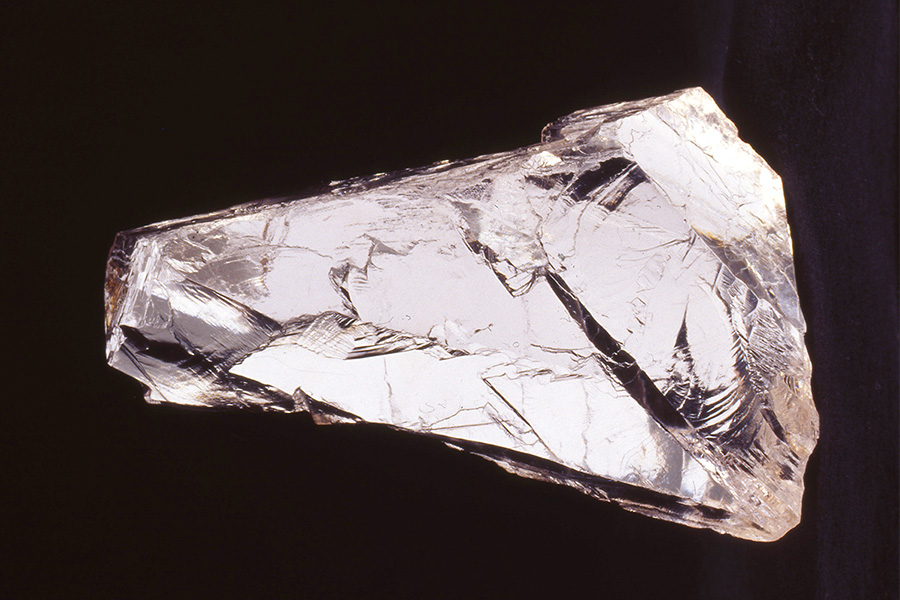
The history of this 777-carat diamond starts in 1990 with its discovery at the Mbuji-Mayi mine in the Democratic Republic of Congo. De Beers purchased it in the early- to mid-1990s, and Steinmetz Diamond Group led the cutting process. Three years and 100 plastic replicas later, Steinmetz cutters produced a gorgeous 203-carat pear-shaped diamond called the Millennium Star. In 1999, De Beers placed it at the center of the Millennium diamond collection to celebrate 100 years since the company started. A year later, it displayed the diamond as part of an exhibition at London’s Millennium Dome. The exhibition was a target of the “Millennium Dome Raid,” which was almost one of the biggest diamond heists. Thankfully, the police arrested the robbers before they could escape. De Beers is still in possession of the diamond.
Golden Jubilee Diamond: 755.5 carats
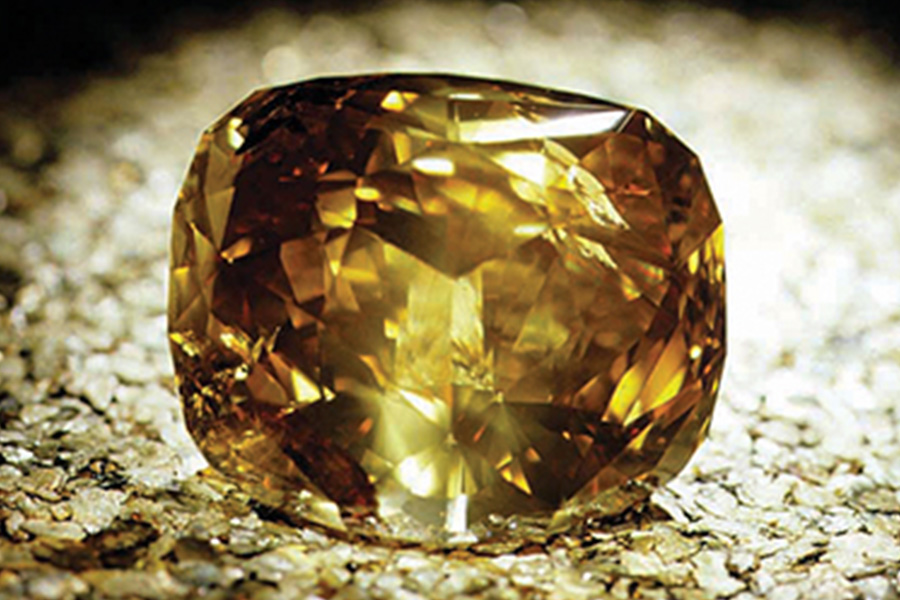
De Beers workers found the Golden Jubilee in 1985 at the Premier mine in South Africa, the same mine the Cullinan hails from. The company hired Gabriel Tokowsky to cut the 755.5-carat diamond, a process that lasted two years. The result was a gorgeous 545.65-carat gold-brown diamond. The GIA graded it the world’s largest cut and faceted stone. It was previously called the “Unnamed Brown” but later renamed “Golden Jubilee” in 2020 after a group of Thai businessmen purchased and presented it to King Bhumibol on the 50th anniversary of his ascension to the Thai throne. The diamond is part of the Thai crown jewels and is on display at the Royal Museum at Pimammek Golden Temple Throne Hall in Bangkok.
Vargas Diamond: 726.6 caratsTwo diamond workers discovered the Vargas diamond in 1938 at the San Antonio River in Minas Gerais, Brazil. It passed through several hands and earned the name Vargas Diamond after the president of Brazil at the time, Getuilo Dornelles Vargas. A year later, Harry Winston read about the diamond in a newspaper and traveled to Antwerp to purchase it. The rough yielded 29 diamonds that weighed a total of 411.06 carats. The largest gem is a 48.26-carat emerald-cut diamond that retained the name President Vargas. Winston sold the diamond to heiress Anne Windfohr Marion in 1944 but later repurchased and recut it into a flawless 44.17-carat gem before selling it again in 1961. The owner of the largest diamond is unknown, but some of the smaller diamonds have resurfaced at auctions over the years. Sotheby’s sold the 28.03-carat Vargas IV for $781,000 in 1989 and the 25.4-carat Vargas VI for $396,000 in 1992.

